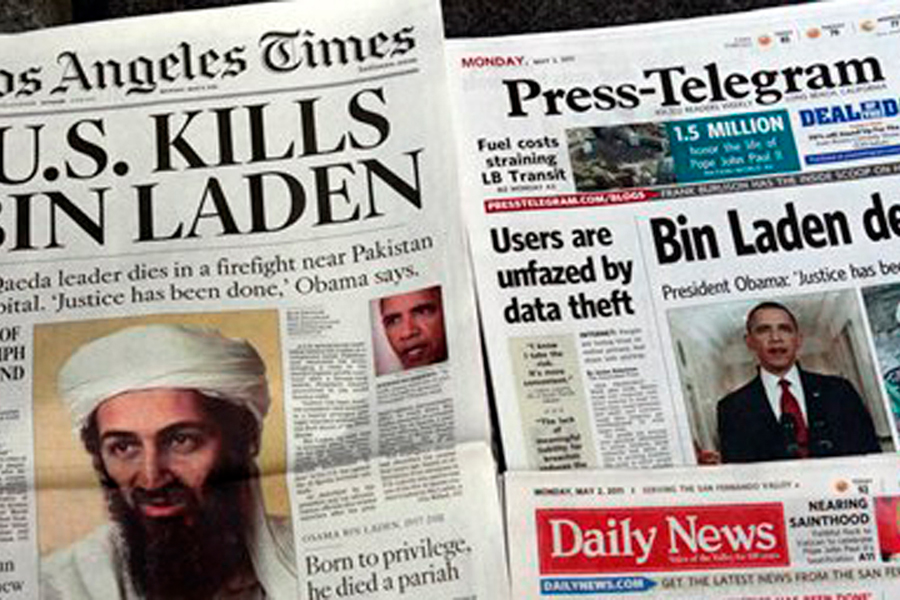LEXINGTON, Va.–The news of al-Qaida leader Osama bin Laden’s death came to me the other night when I leaned out of a classroom window to make sense of the patriotic songs I heard echoing across the Washington and Lee campus. Students were celebrating by waving flags and, later, with fireworks.
The next morning, I sang “America the Beautiful” in the shower. I dressed in red, white and blue, and walked happily to class.
And then, for a second, I felt guilty. I was enjoying the death of another human being — albeit a terrible one — and I had to ask myself why.
I talked about it with a professor who was also surprised by the enthusiasm she saw coming mainly from young people. When I told her of a bin Laden nightmare I had as a child, she stopped me.
“Now that makes sense,” she said. “He was your bogeyman.”
He was the monster that crawled under my bed on Sept.11, 2001.
That day, no one would tell us fifth-graders anything other than that we might be going home early. But walking through the hallway, I heard someone say something about planes, and I spent recess wondering why I couldn’t find one in the sky.
I remember the strange calm of my teacher’s voice as she read to us, her eyes fixed on the page more than usual. I remember hardly eating lunch that day. It was served too early, and we 10-year-olds wanted to solve the mystery of the morning before we could even think of punching a hole in a juice box. I remember the unfamiliar smell of the neighbor’s car that took me home. The school didn’t call my parents and let my brother and me ride home with a friend from down the street. So much for the emergency contact cards we filled out just one week earlier.
When I got home, I turned on the TV, still tuned to CNN from breakfast that morning. What I saw then was the series of clips and images no viewer would ever forget: buildings ablaze, shaky aerial shots of the Pentagon and the slow-motion glide of an airplane that met the New York skyline that had once seemed indestructible.
Smoke clouded the picture. Then the building lost its balance and crumbled. A news anchor said, “There are no words.”
Not long after, the face of Osama bin Laden hijacked our television. People started to say that he was responsible for what happened to the Twin Towers, for the people who jumped from their office windows that morning. All of the anger in my 10-year-old body — and all of the fear that came with it — suddenly had a target: the gaunt man with the long gray-and-white beard, wearing a camouflage jacket and a gloating smile.
Bin Laden haunted my dreams and made me watch nervously when I saw an airplane cutting across the sky. I later blamed him for the anthrax in the mail, and I suspected he might have something to do with the D.C. sniper that kept our Baltimore suburb on edge a few years later.
My professor was right. He was the bogeyman. And for me, there is no humanizing Osama bin Laden. Like other monsters, he was elusive, terrifying and larger than life. His reign of terror was without borders. He was cowardly, too, hurting the helpless the same way imagined fiends prey only on children and only at night.
I can’t say whether the world is safer now or if something scarier might still be in hiding. But the monster under my bed is dead. And for now, the 10-year-old inside of me, whose spirit was crushed on 9/11, is rejoicing.
More information
Photo by AP Images


